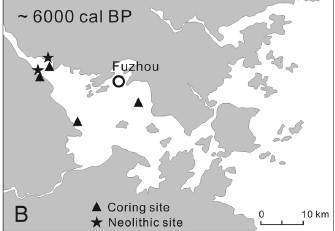In ancient China, productive lowlands were vital in the development and spread of rice-dependent economies centered on paddy field farming. This paper compares and analyzes two independent lines of evidence documenting the late Holocene formation of lowlands suitable for paddy field systems in the Fuzhou Basin (Fujian, China). One paleogeographic reconstruction is based on the analysis of sediment cores from the Fuzhou Basin. Stage one of the paleoenvironmental model is marked by early Holocene sea level rise and the mid-Holocene sea level highstand. Stage two is defined by a fall in sea level, at around 1900 B.P., from the mid-Holocene highstand to modern levels. The paleoenvironmental model suggests that the floodplain and other lowlands suitable for irrigated rice agriculture formed after 1900 B.P., prior to which a large paleoestuary filled the Fuzhou Basin. Do ancient Chinese textual records support the paleoenvironmental model? Are the ancient texts relevant in understanding the anthropogenic contribution to environmental change in the Fuzhou Basin? Textual records covering nearly 2000 years of Chinese history reveal close agreement among the paleoenvironmental and text-based geographic models. Agricultural systems based on rain-fed fields may have existed during the mid-Holocene, but lowlands suitable for paddy field systems did not exist until after 2000 B.P.
Via Dorian Q Fuller



 Your new post is loading...
Your new post is loading...







